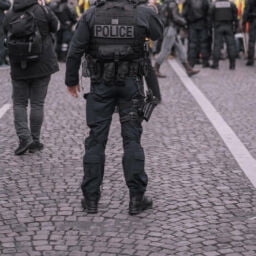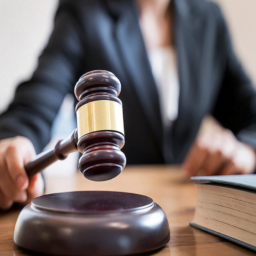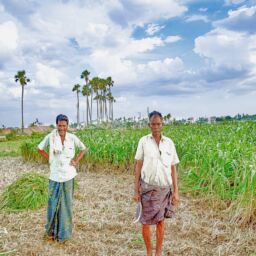INTRODUCTION
The recent Haryana incident in which 40 children were attacked with sticks in school by their teacher, 10 of whom were hospitalised. Also, the viral video of Tamil Nadu school children being thrashed and kicked repeatedly demonstrates the significance of raising awareness about Corporal Punishment in India. The United Nations Committee on the Rights of the Child defined corporal punishment or physical punishment as follows in its General Comment Number 08 of 2006: “Any punishment that involves the use of physical force and is meant to create some degree of pain or suffering, no matter how minor.”
Although it is a social smirch because it causes mental torment in youngsters, suicidal cases have been observed as well, it also raises school dropout rates among children. In India, however, it is depicted fairly, which is why fewer occurrences are reported. When it comes to disciplining pupils, teachers and parents have carte blanche. The Ministry of Women and Child Development performed research named “Child Abuse in India – 2007” a decade ago and found the following:
- Two in every three children were physically mistreated.
- 50% among all children were subjected to some type of physical punishment
- 6% of children who were abused in the home were abused by their parents.
As per the research released in 2018 by the ‘Agrasar Group,’ about 75% of marginalised children are abused by their teachers on a regular basis. For fear of being beaten again, the vast majority of students do not inform their parents.
INDIAN JUDICIARY ON CORPORAL PUNISHMENT
Defending the Himachal Pradesh HC in the case of Ambika S Nagal v. State of Himachal Pradesh, 2020, the court ruled that a teacher’s conduct of slapping her pupils did not constitute assault. In the case of Sister Linsa v. Praseed, 2020, the Kerala High Court recognised caning as a permissible way of disciplining kids, even if the child was only 5 years old unless serious damage was done. Both courts chose to rely on previous Indian and English precedents that affirmed physical punishment as permissible in the above-mentioned cases while disregarding the Delhi High Court’s 2001 decision.
While striking down Section 37(1) (a) and Section 37(4) of the Delhi School Education Rules of 1973, which provided legal legitimacy to physical punishment, as being in violation of Articles 14 and 21 of the Indian Constitution, the Delhi High Court, in the judgment of the case Parents Forum For Meaningful Education and Anothers v. Union of India, reported in 2000, harshly criticised the practice of imposing physical punishment on children, discussing the matter at length. In the recent case of S. Jai Singh v. State, 2021, the Madras High Court explicitly declares that corporal punishment is maltreatment and infringes on a child’s freedom and dignity.
INDIAN LEGISLATIVE FRAMEWORKS
Section 82 of the Indian Penal Code grants children complete exemption from criminal prosecution since they are deemed to be Doli incapax, which implies that the law recognises that they lack the discretion or knowledge to discriminate between good and wrong. Hurting a child is a crime, according to sections 323 and 325 of the Indian Penal Code, and can result in a person being held accountable for causing willfully or serious harm. Under section 352 of the IPC, assault or criminal force against a child is punishable; criminal intimidation is punishable under section 506 of the IPC, and humiliation to the point of suicide is punishable under section 305 of the IPC.
Section 17(1) of the Right of Children to Free and Compulsory Education Act, 2009 expressly bans the imposition of any kind of punishment on a child, whether physical or mental, and anybody who breaches this section shall be subject to disciplinary action in accordance with the appropriate service rule. As per the provision of Section 23 of the Juvenile Justice (Care and Protection of Children) Act, 2000, any person in charge of an underage person, who abandons, abuses or exposes the underage person, or procures him/her to be abandoned or neglected, inflicting mental or bodily anguish to the underage person is subject to up to six months in jail or a fine.
INTERNATIONAL STATUS
As outlined in UN Resolution 44/25 of 1989, and accepted by India in 1992, the Convention on the Rights of the Child (UNCRC) provides that any form of punishment including physical force is prohibited under any circumstances. This resolution specifies that children have all the rights to be protected against abuse that may be physical, emotional, or sexual in nature. Governments should take steps to ensure that children are appropriately cared for and safeguarded from the violence, abuse, and neglect that they may experience from their parents or caregivers.
During its 42nd session in Geneva, 2006, the United Nations Committee on the Rights of the Child released General Comment Number 08, titled ‘The Right of the Child to Protection from Corporal Punishment and Other Cruel Forms of Punishment,’ in which it emphasised the duty of all the state parties to work promptly to ban and abolish all corporal punishment, including corporal punishment in schools. Our neighbour Pakistan, which lags behind many South Asian countries in terms of human rights, recently enacted a landmark bill prohibiting the use of corporal punishment on minors. It also contains punishments for physically abusing children. Despite the fact that the bill only pertains to the city of Islamabad.
NATIONAL COMMISSION FOR THE PROTECTION OF CHILD RIGHTS (NCPCR)
NCPCR was founded under the Commissions for the Protection of Child Rights (CPCR) Act of 2005, which was signed into law in 2007. A legislative entity formed under the Commissions for the Protection of Child Rights Act, 2005, and managed by the Indian Ministry of Women and Child Development, the National Commission for the Protection of Child Rights (NCPCR) is tasked with protecting the rights of children in India. A primary objective of the Commission is to make sure that all of India’s legislation, strategies, projects, and organizational management are in line with the viewpoint of children’s rights, as outlined in both the Indian Constitution and UN Convention on the Rights of the Child.
CONCLUSION
Corporal punishment has two sides to it. While parents and teachers alike utilise such instruments in the best interests of their children, it may cause more harm than good. The following are the arguments in support of the position stated above:
- The practice described above is analogous to a slippery slope. Excessive punishment can make a youngster resentful and have an impact on his behaviour.
- While Aristotle emphasised the importance of habits and the virtues connected with them, punishments tend to make a youngster labour out of fear rather than curiosity.
- In the case of penalties, coercion, negotiation, and a give-and-take relationship substitute the trust, respect, and empathy that should have guided parents’ actions.
The age of a child is a period of learning. While kids believe and respect what their parents and professors say, such precedents are incorrect. Punishment, even for terrible conduct or habit, is not acceptable because people, as guardians, have failed in our obligation to instil the appropriate values in our children.
Author(s) Name: Harsh Anand (University of Lucknow, Lucknow)
















